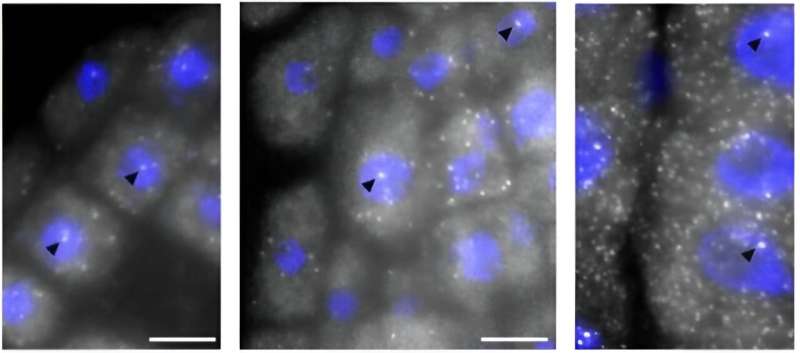This article has been reviewed according to Science X's editorial process and policies. Editors have highlighted the following attributes while ensuring the content's credibility:
fact-checked
proofread
New insights on the transcriptional regulation of seed germination

Seeds remain in a dormant state, waiting for the right environmental conditions to germinate, thus increasing the probability of fragile seedling survival. The transition from a dry seed to a vegetative seedling is an irreversible process that requires a near-complete reprogramming of the plant transcriptome. While it is widely accepted that the activation of protein synthesis (translation) from seed-stored mRNAs is an essential step to trigger seed germination, much less was known about the re-initiation of the process of transcription.
A team of researchers at the Centre for Research in Agricultural Genomics (CRAG) led by Julia Qüesta embarked on investigating the question of when transcription re-starts during the seed-to-seedling transition.
The group applied innovative RNA sequencing and bio-imaging methodologies to monitor the dynamics of new RNA synthesis (nascent transcription) in a time course of seed germination and early seedling growth using the model plant Arabidopsis thaliana. This combined approach enabled the detection of RNA transcription very rapidly following seed re-hydration (imbibition), implying that transcription re-starts much earlier than previously anticipated.
In addition to the timing of transcription, the sensitivity of the methods used allowed the identification of thousands of previously unannotated non-coding RNAs, including intergenic and antisense long non-coding RNAs (lncRNAs), as well as very unstable non-coding transcripts. These findings will likely open up new avenues to investigate the regulatory role of the non-coding genome in seed germination control.
In the second phase of the work, the authors generated datasets of genome-wide chromatin accessibility for the same germination time course.
By filtering the unstable non-coding transcripts that fell into accessible chromatin regions in the genome, the authors were able to detect important regulatory features such as bidirectional transcription and transcriptional enhancers. To date, it was not clear whether plant enhancer elements were transcribed producing enhancer RNAs, a well-known characteristic of enhancers in multicellular animals.
This research published in Nature Communications describes the identification of Arabidopsis enhancer elements, which will likely be of great interest in plants of agronomic value.
More information: Benjamin J. M. Tremblay et al, Interplay between coding and non-coding regulation drives the Arabidopsis seed-to-seedling transition, Nature Communications (2024). DOI: 10.1038/s41467-024-46082-5
Provided by Center for Research in Agricultural Genomics (CRAG)





















